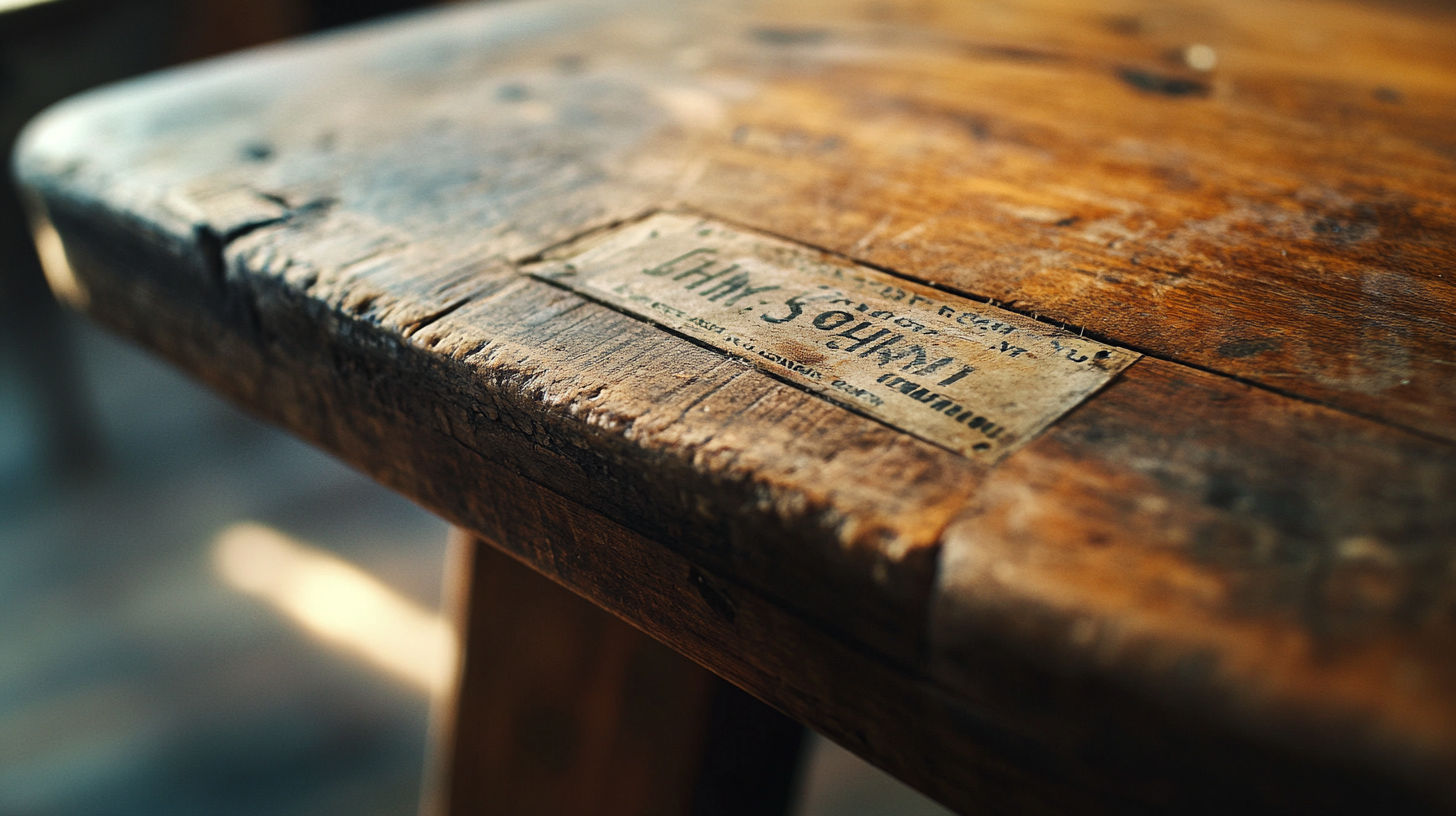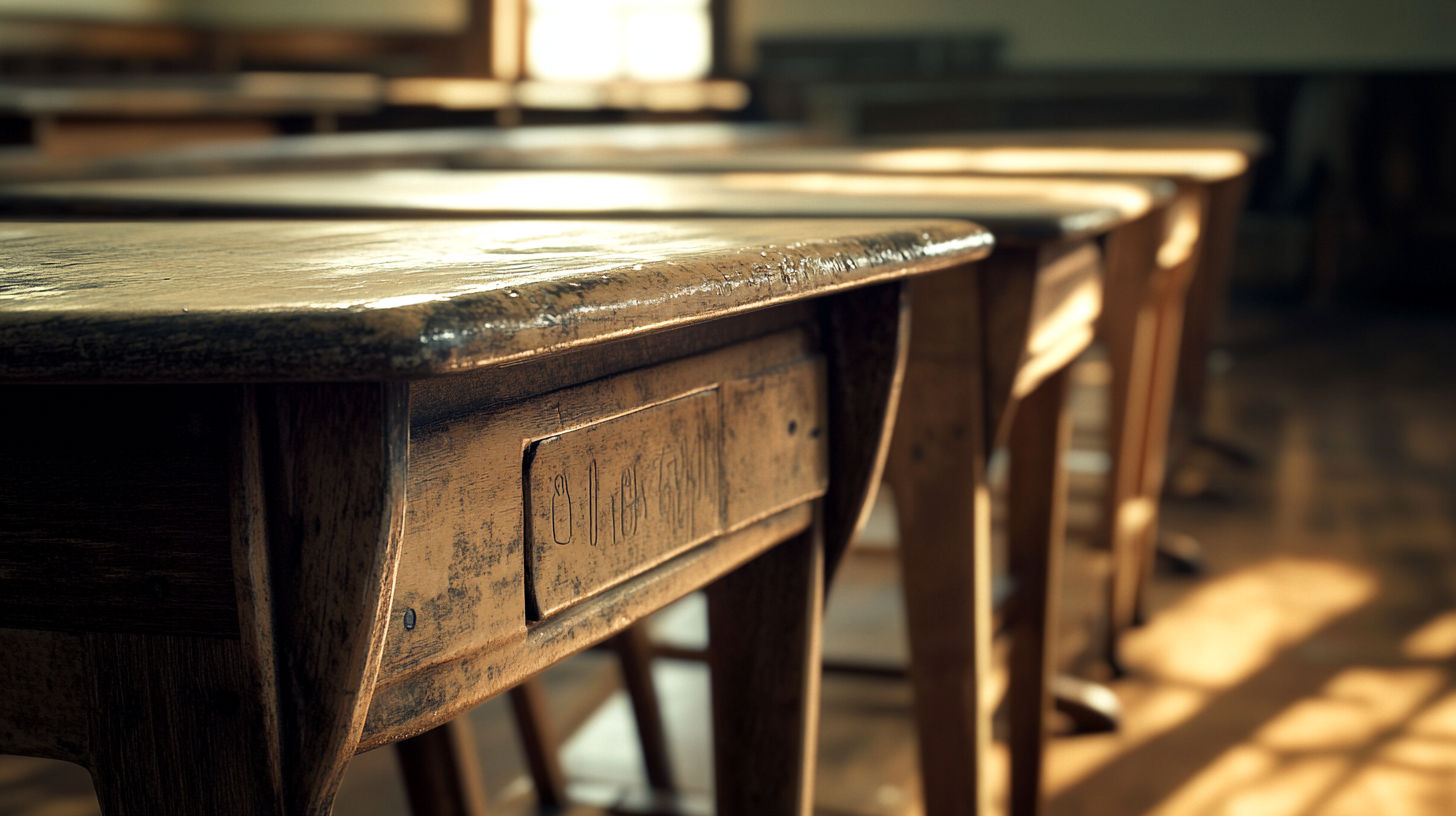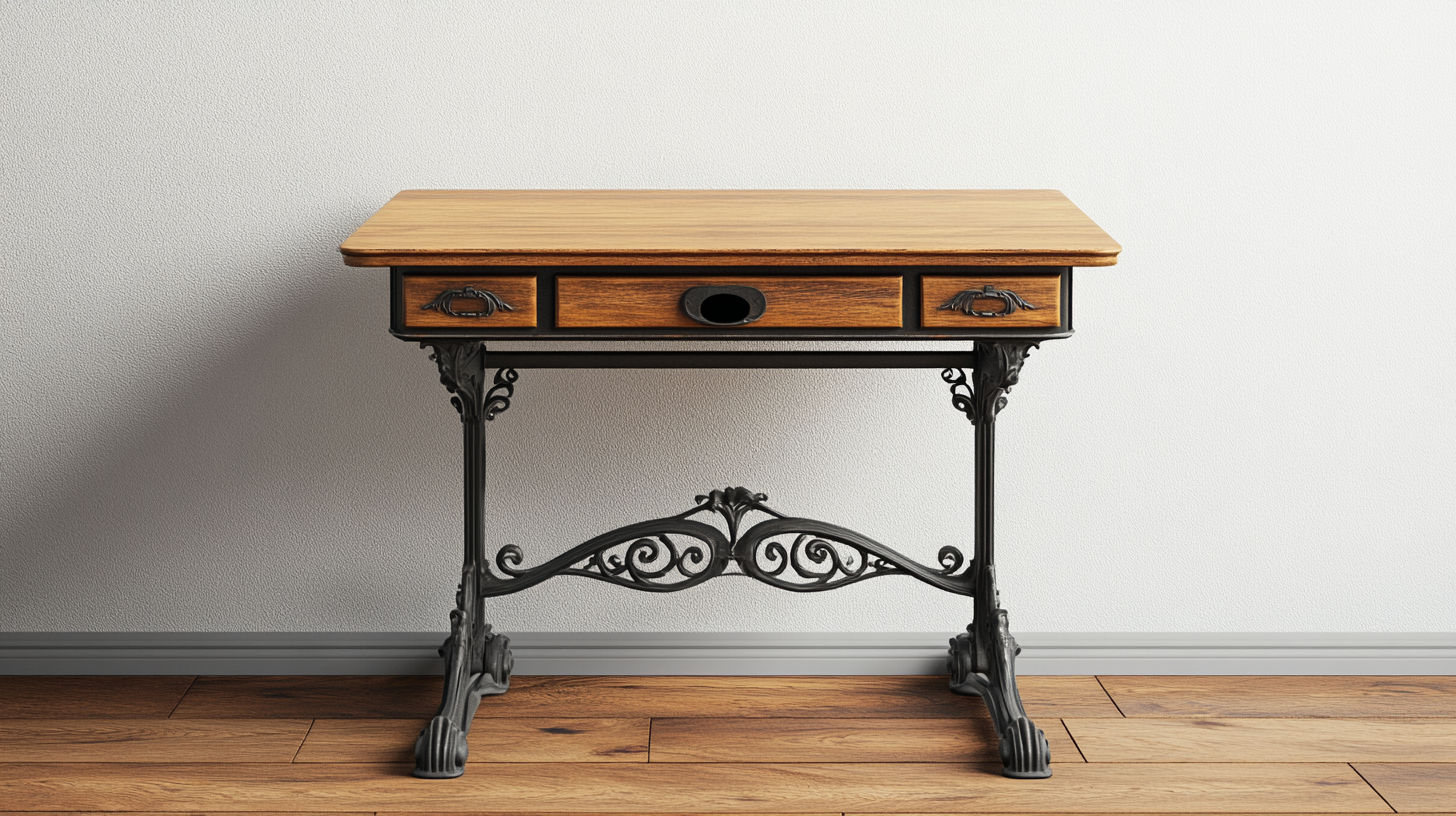
Introduction to Antique School Desks
Antique school desks are more than just old furniture; they’re historical artifacts that tell the story of education’s evolution through the decades. Whether you’re a collector, decorator, or simply curious about a family heirloom, understanding how to identify authentic antique school desks can be both rewarding and potentially valuable.
These nostalgic pieces have become increasingly sought after for their historical significance, decorative appeal, and the sense of nostalgia they evoke. From ornate cast iron designs of the Victorian era to the simpler wooden models of the mid-20th century, antique school desks come in various styles that reflect changing educational philosophies and manufacturing techniques.
In this comprehensive guide, we’ll cover the key elements to look for when identifying antique school desks, including materials, construction techniques, manufacturer markings, age indicators, and tips for determining their value. By the end, you’ll have the knowledge needed to distinguish genuine antiques from more recent reproductions and better understand what makes certain desks more valuable than others.
The History and Evolution of School Desks
A Timeline of School Desk Development
Evolution of School Desks Through History
- 1850s-1870s
Early Models
The first mass-produced school desks appeared, typically featuring a cast iron frame with simple wooden surfaces. These early models were often communal benches with shared writing surfaces rather than individual desks. - 1880s-1900s
Victorian Era Innovation
This period saw ornate cast iron frames with more elaborate decorative elements. Designs typically included individual seating with adjustable cast iron legs, ink wells, and fold-up seats. The popular "Fashion" desk by the Columbia School Furniture Company emerged during this time. - 1900s-1920s
Progressive Era Standardization
Mass production techniques led to more standardized designs. Oak was the predominant wood, with simpler but still decorative cast iron frames. The lift-top desk became the standard, allowing for better storage. - 1930s-1950s
Mid-Century Modernization
Designs became more streamlined with less ornamentation. Materials began to shift toward steel frames with plywood or laminate surfaces. Adjustable height features became more common for accommodating different student sizes. - 1960s-1970s
Contemporary Transition
Traditional wood and iron desks were largely replaced by modern materials like plastic, aluminum, and laminate. These later models are considered vintage rather than antique, though some are becoming collectible.
Understanding this timeline helps collectors place a desk within its proper historical context. The most sought-after antique school desks typically come from the 1880s through the early 1900s, when craftsmanship and decorative elements were at their peak. According to educational historians at EdTech Magazine, these artifacts represent important shifts in educational philosophy, as the move from shared benches to individual desks reflected new ideas about personalized learning.
Key Identification Markers for Antique School Desks
Materials and Construction
Wood Types and Treatment
Most authentic antique school desks feature solid hardwoods, with oak being the most common choice due to its durability and availability. Older desks (pre-1900) may use other hardwoods like maple or ash. The wood on genuine antiques will show:
- Natural aging patterns, with a darker, amber-toned patina
- Visible grain patterns that are consistent with solid wood (not veneer)
- Signs of hand-finishing rather than machine perfection
- Evidence of natural wear in high-contact areas
As noted by antiques experts at LoveToKnow, modern reproductions often use cheaper woods, veneers, or even engineered wood products that weren’t available when antique desks were manufactured.
Metal Components and Features

The metal framework is often the most distinctive feature of antique school desks. Look for:
- Cast iron vs. steel: Genuine antiques typically have cast iron frames rather than welded steel. Cast iron has a different texture and weight compared to steel.
- Decorative elements: Victorian-era desks (1880s-1900s) feature ornate scrollwork and designs in the cast iron.
- Manufacturing techniques: Hand-assembled components with visible joining methods like rivets or bolts rather than modern welding.
- Patina and oxidation: Authentic antique metal will show appropriate age-related patination. Reproductions often have artificially aged finishes that look unnatural.
According to furniture historians on Reddit’s r/Antiques, “The really old desks have decorated cast iron frames/hardware, like on old park benches or sewing machines,” which helps distinguish them from later models.
Design Elements and Style Indicators
Desktop Features
Pay close attention to these desktop elements:
- Inkwell holes: Common in desks from the 1850s through the 1930s, before fountain pens and ballpoints became widespread
- Lift-top design: Popular from the 1890s to 1940s, allowing for storage underneath
- Pencil groove: A small channel along the top edge to prevent writing implements from rolling away
- Surface wear patterns: Authentic desks often show ink stains, carved initials, or other student-generated marks
Seat Configurations
The seat design can also help identify the era:
- Attached vs. separate: Most antique school desks have attached seats that fold up
- Bench-style vs. individual: Earlier models (pre-1870s) often featured bench seating for multiple students
- Adjustability features: Some higher-end models from the early 1900s had height adjustment mechanisms
- Seat material: Early seats were typically wood, while later models might incorporate other materials
According to a discussion on Houzz, “Typical wood of the desk was oak. A row of desks was created by fastening the desks to two 1” thick strips of wood. A typical row contained 3 to 5 desks." This row configuration was common in schoolrooms of the late 19th and early 20th centuries.
Manufacturer Identification
Identifying Makers and Manufacturers
Common Manufacturers and Their Marks
Several major companies dominated the school furniture market in the late 19th and early 20th centuries. Identifying their marks can help authenticate and date a desk:
Notable Antique School Desk Manufacturers
Columbia School Furniture Company
- Active period: 1880s-1910s
- Look for: “Columbia” or “Fashion Desk” cast into metal parts
- Known for: Ornate Victorian-style cast iron designs
American Seating Company
- Active period: 1886-present (antique models pre-1940)
- Look for: “American S. Co.” stamps or metal plates
- Known for: Standardized designs that were widely distributed
Sidney School Furniture Company
- Active period: 1880s-1920s
- Look for: “Sidney” or “S.S.F. Co.” marks
- Known for: Robust cast iron frames with distinctive scroll patterns
A.H. Andrews & Co.
- Active period: 1865-1890s
- Look for: “Andrews” or “The Triumph Desk” markings
- Known for: Early innovation in desk design, particularly the “Triumph” model
Where to Find Manufacturer Information
Manufacturer marks can typically be found in several locations:
- Cast directly into the metal framework (especially on leg ends)
- Stamped on metal plates attached to the wood components
- Stenciled or stamped onto the underside of the wooden desktop
- Paper labels occasionally found on the underside of desks or inside storage compartments
According to antique furniture experts at JustAnswer, “There would be a name inside the lift top if there was one. Most did not have names or stamps.” This means the absence of a mark doesn’t necessarily indicate a reproduction, as many authentic desks weren’t marked.
Age Determination Techniques
How to Date Your Antique School Desk
Construction Methods
Examine how the desk was put together:
- Joinery techniques: Earlier desks often feature hand-cut dovetail or mortise-and-tenon joints
- Screws and fasteners: Look at screw types - slotted screws are older than Phillips head, and hand-forged screws predate machine-cut ones
- Assembly marks: Hand-numbered parts or craftsman marks can indicate older, pre-mass production pieces
- Tool marks: Evidence of hand tools rather than machine precision suggests an older piece
Patina and Wear Assessment
Age Indicators Checklist
Look for these signs of authentic aging
- Natural wood darkening (patina) consistent throughout
- Wear patterns in logical locations (edges, writing surface)
- Scratches, dents and marks that show actual use
- Ink stains or student-created markings
- Consistent aging of all hardware components
- Original finish wearing thin in high-use areas
According to experts at Invaluable, “Dovetail joints, maker’s marks or labels, and handcrafted imperfections” are key indicators of an authentic antique desk. The site advises collectors to “take your time” and carefully “inspect craftsmanship” when evaluating potential antiques.
Hardware Analysis
The hardware on a school desk can provide important clues about its age:
- Hinge types: Earlier butterfly hinges or hand-forged designs indicate an older piece
- Drawer pulls and knobs: These evolved in style over time and can help date a desk
- Inkwell designs: The material and design of inkwells changed throughout the decades
- Metal finishes: Original brass, iron, or other metals will show specific aging patterns
Value Assessment
Determining the Value of Antique School Desks
Key Value Factors
Antique School Desk Value Factors
Factors that impact the market value of antique school desks
</tbody>
</table>
Current Market Pricing
The value of antique school desks varies widely based on the factors above. According to market data and recent sales:
Antique School Desk Price Ranges
Approximate market values as of 2023
| Category | Price | Notes |
|---|---|---|
| Age | Generally, older desks (pre-1900) command higher prices | Earlier examples show more handcraftsmanship |
| Condition | Original condition with authentic patina | Minimal repairs or alterations |
| Rarity | Unusual designs or limited production models | Regional variants or special commissions |
| Originality | Original finish and hardware | Intact manufacturer's marks |
| Aesthetics | Ornate Victorian styles typically command premiums | Appeal of design and decorative elements |
</tbody>
</table>
Based on an appraisal from JustAnswer, a late 1800s desk described as “Ships Desk” in Walnut with Burled Walnut accents was valued between $1,000-$2,000, showing how higher-end examples can command premium prices.

Distinguishing Reproductions from Authentic Antiques
Authentic vs. Reproduction
Common Reproduction Indicators
Reproductions and fakes are common in the antique furniture market. Here’s what to watch for:
- Inconsistent aging: Reproductions often show artificial aging that doesn’t match natural wear patterns
- Modern materials: Look for modern plywood, particleboard, or other materials not available when antiques were made
- Mechanical precision: Machine-perfect cuts and joints are a sign of modern manufacturing
- Hardware inconsistencies: Modern screws, bolts, or other fasteners that don’t match the purported era
- Finishing techniques: Modern finishes have a different appearance and feel compared to traditional varnishes and oils
As Beauchamp Antiques notes, “A few signs that furniture is newer include consistent color, lack of patina, machine-cut moldings/carvings, and modern screws or nails. Things like mortise-and-tenon joints, wood pegs, hand-cut dovetails, and rose head nails are typically found in antique furniture.”
Authentication Best Practices
To increase your confidence when identifying an authentic antique school desk:
- Compare with verified examples: Study museum collections and reference books
- Consult experts: Antique dealers, appraisers, or auction house specialists can provide authentication
- Examine thoroughly: Look beyond surface appearance to construction details
- Research history: Try to establish provenance and history of the piece when possible
- Join collector communities: Groups like those on Reddit’s r/Antiques can provide collective expertise
Restoration and Preservation
Caring for Antique School Desks
Restoration Dos and Don’ts
Restoration Guidelines
DO:
- Clean gently with appropriate, non-abrasive cleaners
- Stabilize loose components while maintaining original construction
- Document the desk before any restoration work begins
- Consult with professionals for significant repairs
- Preserve original finishes whenever possible
DON’T:
- Strip original patina or finish unnecessarily
- Replace original hardware with modern equivalents
- Use modern glues or fasteners when traditional methods would work
- Apply thick modern finishes that change the character
- Sand away nicks, scratches and marks that show authentic use
Preservation Best Practices
To maintain your antique school desk in optimal condition:
- Environmental control: Keep away from direct sunlight, extreme temperature fluctuations, and high humidity
- Regular cleaning: Dust with soft cloths and use appropriate mild cleaning products
- Careful handling: Move with care and support weight properly to prevent stress on joints
- Waxing and polishing: Use traditional furniture waxes appropriate for the era
- Documentation: Maintain records of the desk’s history, any restoration work, and provenance information
As furniture restoration experts frequently note, the goal should be to preserve rather than renovate. Prodigal Pieces provides excellent examples of sympathetic restoration that maintains historical integrity while stabilizing condition.
Collecting and Displaying Antique School Desks
Collecting and Display Tips
Building a Collection
For those interested in collecting antique school desks:
- Specialize by era or manufacturer: Focusing your collection creates coherence and expertise
- Network with other collectors: Join forums, attend antique shows, and connect with specialists
- Research thoroughly: Build a library of reference materials and price guides
- Document your findings: Keep detailed records of each acquisition
- Consider complementary items: Period inkwells, books, and school supplies enhance a collection
Display and Use Ideas
Antique school desks can be both decorative and functional in modern homes:
- Home office centerpiece: Use as a characterful desk for light work
- Entryway furniture: Perfect for dropping mail and keys
- Children’s rooms: A nostalgic study space (with appropriate height considerations)
- Living room accent: Showcases historical craftsmanship as a conversation piece
- Collection display: Group multiple desks to show evolution of designs
According to interior design experts, these pieces work particularly well in farmhouse, industrial, or eclectic decorating styles, providing authentic character that modern furniture often lacks.
Common Questions About Antique School Desks
Frequently Asked Questions
How can you tell if a school desk is truly antique?
Authentic antique school desks typically show:
- Solid hardwood construction (usually oak) with natural aging and patina
- Cast iron frames rather than welded steel
- Hand-crafted joinery techniques
- Period-appropriate hardware like slotted screws and cast brass fittings
- Signs of genuine wear consistent with classroom use
- Manufacturing techniques from the era (pre-1940s)
Look for manufacturer marks cast into the metal framework or stamped on metal plates. Check construction details like dovetail joints and hand-finished surfaces. Modern reproductions often lack the authentic patina and typically show machine-perfect construction.
How do I date an old school desk?
To determine the age of an antique school desk:
- Identify the style and compare to known period examples
- Look for manufacturer marks and research the company’s production years
- Examine construction techniques (earlier desks show more handwork)
- Check hardware styles (hinges, fasteners, and other metal parts evolved over time)
- Consider the wood finish and patina development
Cast iron designs with ornate Victorian scrollwork typically date to 1880-1900. Simpler but still decorative designs are often from 1900-1930. More streamlined, utilitarian designs usually date from the 1930s-1950s. School desks made after 1950 are generally considered vintage rather than antique.
What are the features of an old-fashioned school desk?
Classic antique school desks typically feature:
- A wooden desktop (usually oak) with a sloped writing surface
- Cast iron leg framework with decorative elements
- An attached seat that often folds up
- A storage compartment under a lift-top design
- An inkwell hole or insert on the desktop
- A pencil groove along the top edge
- Occasionally, a book rack beneath the desktop
As noted by Spaceist’s history of school desks, "By the early 20th century school desks had evolved from including a shelf underneath the desk area for storage to the lift-lid design we think of as the quintessential old school desk, with a storage area underneath the desktop for books."
How much is a vintage school desk worth?
Antique school desk values vary considerably based on:
- Age: Pre-1900 desks typically command $300-$900, with rare examples exceeding $1,500
- Condition: Original finish and minimal repairs significantly increase value
- Rarity: Unusual models or those from less common manufacturers bring premiums
- Provenance: Documented history or association with notable institutions adds value
- Decorative appeal: Ornate Victorian-era desks typically bring higher prices
Mass-produced models from the 1930s-1950s generally sell for $100-$400 in good condition. Later desks (1950s-1970s) typically range from $50-$250. The market fluctuates based on decorating trends and collector interest, so research current sales for the most accurate pricing.
What are the most valuable antique school desk types?
The most valuable antique school desks typically include:
- Pre-1880 examples with exceptional craftsmanship and original condition
- Ornate Victorian-era desks with elaborate cast iron decorations
- Rare models from prestigious manufacturers like Columbia School Furniture Company
- Custom or limited production models made for specific institutions
- Desks with documented historical significance or from notable schools
Particularly valuable are complete matched sets or desks with original accompanying chairs. Pieces with original finish in excellent condition can command premium prices, especially when they retain original manufacturer’s marks or labels.
External Resources for Further Research
Helpful Resources for Antique School Desk Identification
Valuable Antiques: Antique School Desks Guide
Comprehensive identification guide with detailed information on desk styles, manufacturers, and values. Includes an extensive visual gallery of authentic examples.
LoveToKnow: Antique Iron School Desk
Detailed analysis of cast iron school desk identification, with focus on decorative elements and manufacturing techniques from different eras.
EdTech Magazine: A Visual History of School Desks
Historical timeline of school desk evolution with archival photographs and historical context for educational furniture development.
Oldest.org: 12 Styles of Old School Desks
Exploration of different historical school desk styles from around the world, with historical context and identification characteristics.
Reddit r/Antiques Community
Active community of antique collectors where you can post photos of school desks for identification help from knowledgeable members.
Invaluable: Guide to Antique Desks
Expert advice on authenticating and valuing antique desks, including school desk sections, with professional appraisal techniques.
Conclusion
Identifying antique school desks is both an art and a science, requiring attention to historical context, materials, construction techniques, and design elements. By carefully examining these factors, collectors and enthusiasts can accurately date and authenticate these nostalgic pieces of educational history.
Whether you’re considering purchasing an antique school desk, researching one you already own, or simply appreciating their historical significance, understanding these identification techniques will help you appreciate the craftsmanship and design philosophy of different eras.
Remember that condition, rarity, and authenticity significantly impact value. While some may choose to restore these pieces, it’s generally advisable to preserve as much original character as possible. Each scratch, ink stain, and sign of wear tells part of the desk’s story and connects us to the students who once sat there.
As interest in authentic vintage and antique furnishings continues to grow, these charming pieces of educational history will likely remain desirable for both their decorative appeal and their ability to evoke nostalgia for schooldays past.
Get a Professional Appraisal
Unsure about your item’s value? Our certified experts provide fast, written appraisals you can trust.
- Expert report with photos and comps
- Fast turnaround
- Fixed, upfront pricing
No obligation. Secure upload.
| Category | Price | Notes |
|---|---|---|
| Pre-1880 Early Models | $500-$1,500 | Rare, museum-quality examples may exceed this range |
| 1880-1900 Victorian Era | $300-$900 | Higher for ornate cast iron with exceptional condition |
| 1900-1930 Progressive Era | $200-$600 | Popular among collectors for historical significance |
| 1930-1950 Mid-Century | $100-$400 | Growing in popularity with mid-century enthusiasts |
| 1950-1970 Late Vintage | $50-$250 | Considered vintage rather than antique |



